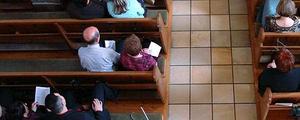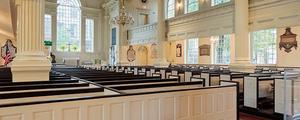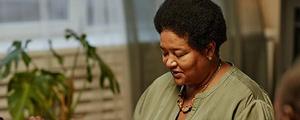Story Highlights
- 82% say they are religious, spiritual or both
- 18% say they are neither spiritual nor religious, up from 9% in 1999
- Percentage saying they are religious down from 54% in 1999
WASHINGTON, D.C. -- Nearly half of Americans (47%) describe themselves as religious, another 33% say they are spiritual but not religious, and 2% volunteer they are “both.” Although the vast majority of U.S. adults have one of these orientations toward the nonphysical world, the 18% who say they are neither religious nor spiritual is twice the proportion Gallup measured when it first asked this question in 1999. Over the same period, the percentage identifying as religious has declined by seven percentage points.
These results are based on a July 2023 Gallup poll, which updated a question that had been asked previously in 1999 and 2002. All told, 82% of Americans have some type of spiritual belief system. This proportion is down from 90% in 1999 and 87% in 2002.
The decline in Americans identifying as religious is consistent with the trends for other Gallup measures of religiosity and religious practice, particularly in the past two decades. However, Gallup has documented steeper declines in formal religious practice (church attendance and church membership) than in belief in God and prayer.
Partisanship, Age Biggest Differentiators of Religiosity and Spirituality
The greatest variation in religious or spiritual beliefs is seen by party identification and age.
Among party groups, Republicans are the most likely to identify as religious, with 61% doing so, while 28% say they are spiritual. More independents say they are religious (44%) than spiritual (32%), while Democrats are about equally as likely to say they are spiritual (41%) as religious (37%).
Twenty-one percent of both Democrats and independents say they are neither religious nor spiritual, compared with 8% of Republicans.
Among age groups, the oldest Americans -- those aged 65 and older -- are most likely to identify as religious, at 57%, compared with between 38% and 48% of those in younger age groups. Young adults are much more inclined than other age groups to say they are neither religious nor spiritual. The 26% of young adults without a belief system is nearly three times as many as the oldest Americans (9%) without one.
Democrats Far Less Likely Than in Past to Say They Are Religious
When Gallup first asked about religious/spiritual identification in 1999, Democrats (60%) were about as likely as Republicans (62%) to identify as religious. Since then, the percentage of religious Democrats has fallen 23 points. During that time, the percentage of Democrats identifying as spiritual but not religious has increased 14 points, while the percentage saying they are neither has tripled.
At the same time, there has been no meaningful change in Republicans’ self-identification as religious or spiritual and only modest changes among independents. Over the past two decades, independents have become slightly less likely to identify as spiritual and slightly more likely to say they are neither religious nor spiritual.
All Age Groups Less Religious
Americans of all age groups are less likely today to say they are religious than people in the same age groups did in 1999, with declines ranging from five to 13 percentage points.
All age groups also show increases in the percentages saying they are neither religious nor spiritual. Larger proportions of Americans in older age groups identify as spiritual today than did so in 1999, while there has been little change in spiritual identification among those younger than 50.
Bottom Line
It is well-established that Americans are less religious than in the past. Still, the vast majority of Americans describe themselves as being either religious or spiritual. Some people who were formerly religious may have found nonreligious forms of spirituality to address their nonphysical needs, while others may have turned away from any type of spiritual or religious practice entirely. Being nonreligious and nonspiritual is most common among young adults; however, only about one in four young adults describe themselves this way. This suggests that in the future a diminished but still large majority of U.S. adults will have some religious or spiritual connection in their lives.
To stay up to date with the latest Gallup News insights and updates, follow us on Twitter.
Learn more about how the Gallup Poll Social Series works.
View complete question responses and trends (PDF download).




